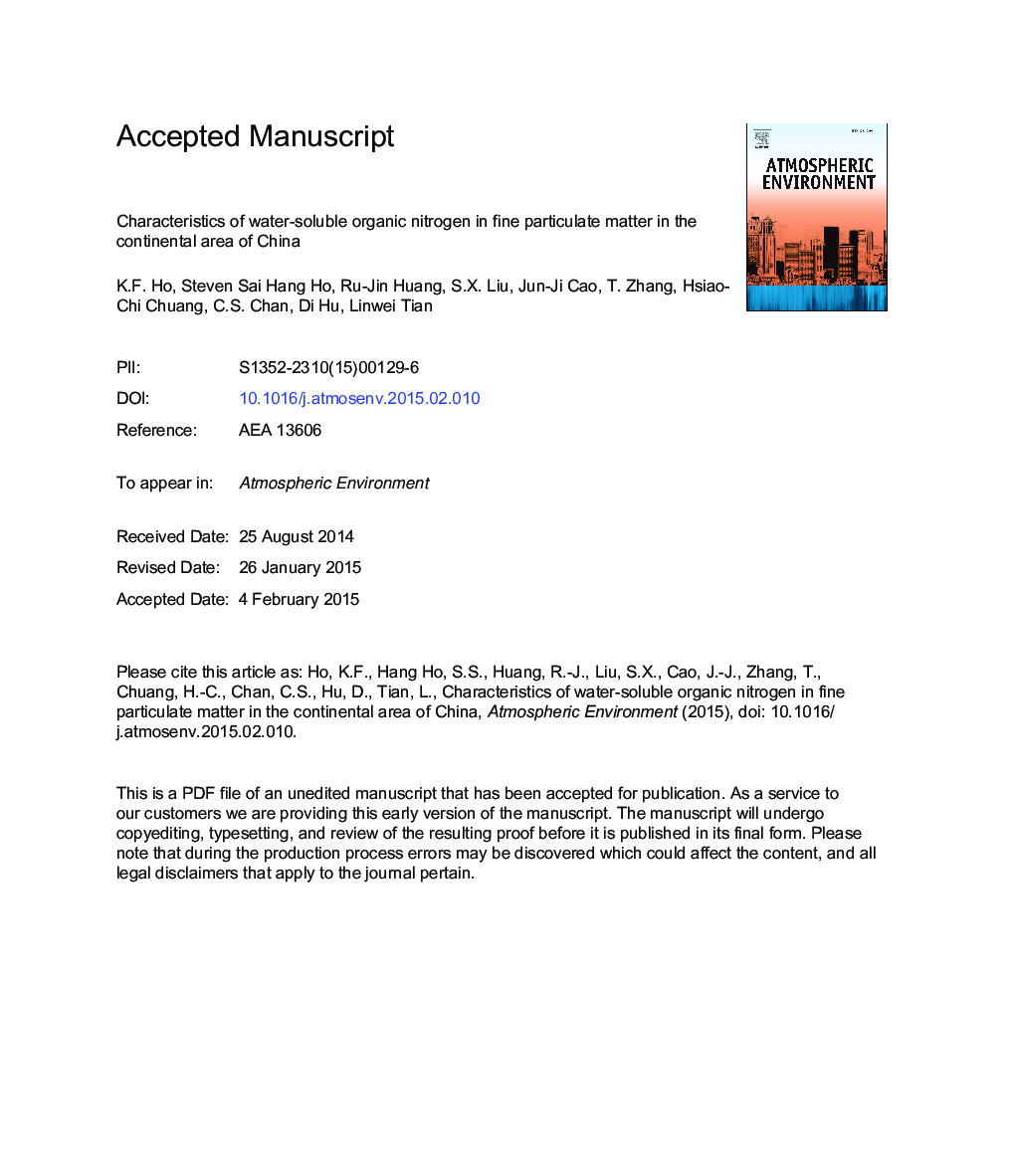| Article ID | Journal | Published Year | Pages | File Type |
|---|---|---|---|---|
| 6338301 | Atmospheric Environment | 2015 | 40 Pages |
Abstract
In recent years growing evidence has shown that organic nitrogen (ON) constitutes a significant fraction of the nitrogen budget in particulate matter (PM). However, the composition and sources of ON in Chinese PM are not clear to date due to the lack of field measurements and receptor modeling interpretations. In this study, water-soluble ON (WSON), free amino acids (FAAs) and primary amines, together with water-soluble ionic species and carbonaceous components, were quantified in PM2.5 collected in Xi'an, China from 2008 to 2009. The yearly average WSON concentration (300 nmol N mâ3, ranging from 29 to 1250 nmol N mâ3) was one order of magnitude higher than that reported in other urban and rural regions in U.S. A total of 24 organic nitrogen species were determined, with an average total concentration of 2180 pmol mâ3, which account for 1.2% of the WSON in PM2.5. Glycine, β-alanine and methylamine were the most abundant protein type amino acid, non-protein type amino acid and primary amine, respectively, contributing to 21.1%, 5.2% and 20.6% of the total quantified organic nitrogen species (TONS). Strong linear correlations (Pearson's correlation) (r = .72, p < 0.001) between WSON and one of biomass burning tracer (K+) potentially indicate the contribution from biomass burning (especially in spring and fall) and the correlation (r = .76-.87, p < 0.001) between WSON and secondary species (NH4+, NO3â, and SO42â) also suggests the important contribution to WSON from secondary formation processes. Moreover, both protein type amino acids and primary amines revealed good correlations with water-soluble ions in spring, which indicates that seasonal variability occurred in primary sources and secondary formation pathway of the organic nitrogen species were found in Xi'an.
Related Topics
Physical Sciences and Engineering
Earth and Planetary Sciences
Atmospheric Science
Authors
K.F. Ho, Steven Sai Hang Ho, Ru-Jin Huang, S.X. Liu, Jun-Ji Cao, T. Zhang, Hsiao-Chi Chuang, C.S. Chan, Di Hu, Linwei Tian,
